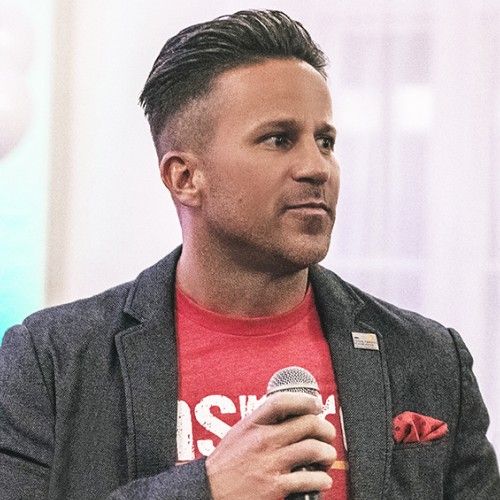Innovation isn’t just a buzzword—it’s a business imperative. While companies pour millions into R&D departments and flashy brainstorming retreats, they often overlook the simplest, most powerful tool for innovation: curiosity.
Curiosity is the mindset that drives teams to ask better questions, challenge stale assumptions, and pursue creative problem-solving when the way forward isn’t clear. But in many companies, curiosity is unintentionally suppressed. Metrics, meetings, and margin pressures often overshadow the quiet (but vital) work of wondering what if.
Take Claire, a mid-level manager at a growing company in Chicago. A few years ago, her team was tasked with improving user retention for their core product. Rather than jumping straight into solution mode, Claire took a different approach. She encouraged her team to spend a full week doing nothing but asking questions—about user behavior, onboarding friction points, and customer psychology. No answers, just curiosity.
At first, leadership questioned her methods. Wasn’t this a waste of time? Why not just try something and see what happens? But Claire stuck to her guns. And by the end of the week, her team discovered a completely overlooked friction point in the account setup flow. They implemented a simple fix and saw a 38% increase in user retention within three months.
The takeaway? Curiosity creates space for meaningful insights—and in turn, real business growth.
Why Companies Need a Culture of Innovation
An innovation culture goes beyond fancy slogans or hackathons. It’s a systemic commitment to exploration, experimentation, and learning. Companies with strong innovation cultures consistently outperform their peers. According to McKinsey, organizations that invest in innovation are 2.4x more likely to deliver top-quartile revenue growth. This is because they are agile, adaptable, and capable of responding to change before it becomes a threat.
At its core, an innovation culture starts with leadership. Leaders who embrace curiosity signal to their teams that it’s okay to take risks, ask questions, and admit they don’t know everything. This kind of psychological safety isn’t just feel-good fluff—it’s directly linked to higher engagement, creativity, and performance.
Yet many leaders shy away from uncertainty. They want proven playbooks and predictable outcomes. But here’s the thing: innovation isn’t predictable. Thomas Edison famously tested over 1,000 different materials before inventing the working light bulb. Imagine if he’d been an entry-level engineer at a Fortune 500 company—how many quarterly reviews would he have survived?
Fortunately, he was the CEO of his own operation. He had the freedom to fail forward.
That’s the kind of grace today’s leaders need to practice when the answer isn’t obvious. Giving grace means allowing space for trial, error, and reflection. It means rewarding effort and learning—not just outcomes.
When curiosity is embedded into company culture, the outcomes speak for themselves:
- Faster problem-solving: Teams that feel safe to question the status quo find better solutions, faster.
- Stronger talent retention: Employees are more likely to stay when they feel their ideas are heard and valued.
- More adaptive strategies: Curious cultures are more resilient in the face of change because they treat disruption as an opportunity, not a threat.
- Competitive differentiation: In saturated markets, the most innovative ideas often come from unexpected questions, not expected answers.
Claire’s story is a perfect example of how one curious leader can transform a team—and a company’s bottom line. By modeling curiosity and championing grace, she created a ripple effect that not only improved customer retention but inspired cross-functional teams to adopt similar discovery-first mindsets.
It’s not enough to say curiosity is valued. It has to be baked into how we lead. Here are three ways leaders like Claire can embed curiosity into everyday management practices:
1. Use Curious Language in Feedback
Instead of:
- “Why didn’t this work?”
Try: - “What did you learn from this experience?”
- “What surprised you most during this project?”
This encourages team members to reflect, not retreat. Ambition in Motion’s executive coaching for leaders and teams helps leaders build these kinds of reflective habits—transforming feedback conversations into moments of growth, not judgment.
2. Add Curiosity Metrics to Performance Reviews
Performance shouldn’t only be about execution—it should also reflect exploration. Try incorporating prompts like:
- “What’s one assumption you challenged this quarter?”
- “What question did you ask that led to new insight or opportunity?”
- “How have you helped others think differently?”
This communicates that curiosity is not just tolerated—it’s expected. Tools like AIM Insights make the performance review and metric-tracking process simple and insightful for managers.
3. Make 1:1s a Safe Space for Wondering
Claire made curiosity part of her weekly 1:1s. She’d ask:
- “What’s something weird or unexpected you’ve noticed lately?”
- “If you had more time, what problem would you love to dig into?”
- “What’s something we should stop doing that no longer makes sense?”
Over time, her team began coming to those meetings not just to report on tasks, but to explore ideas. That’s when innovation becomes not just a moment—but a movement.




































































